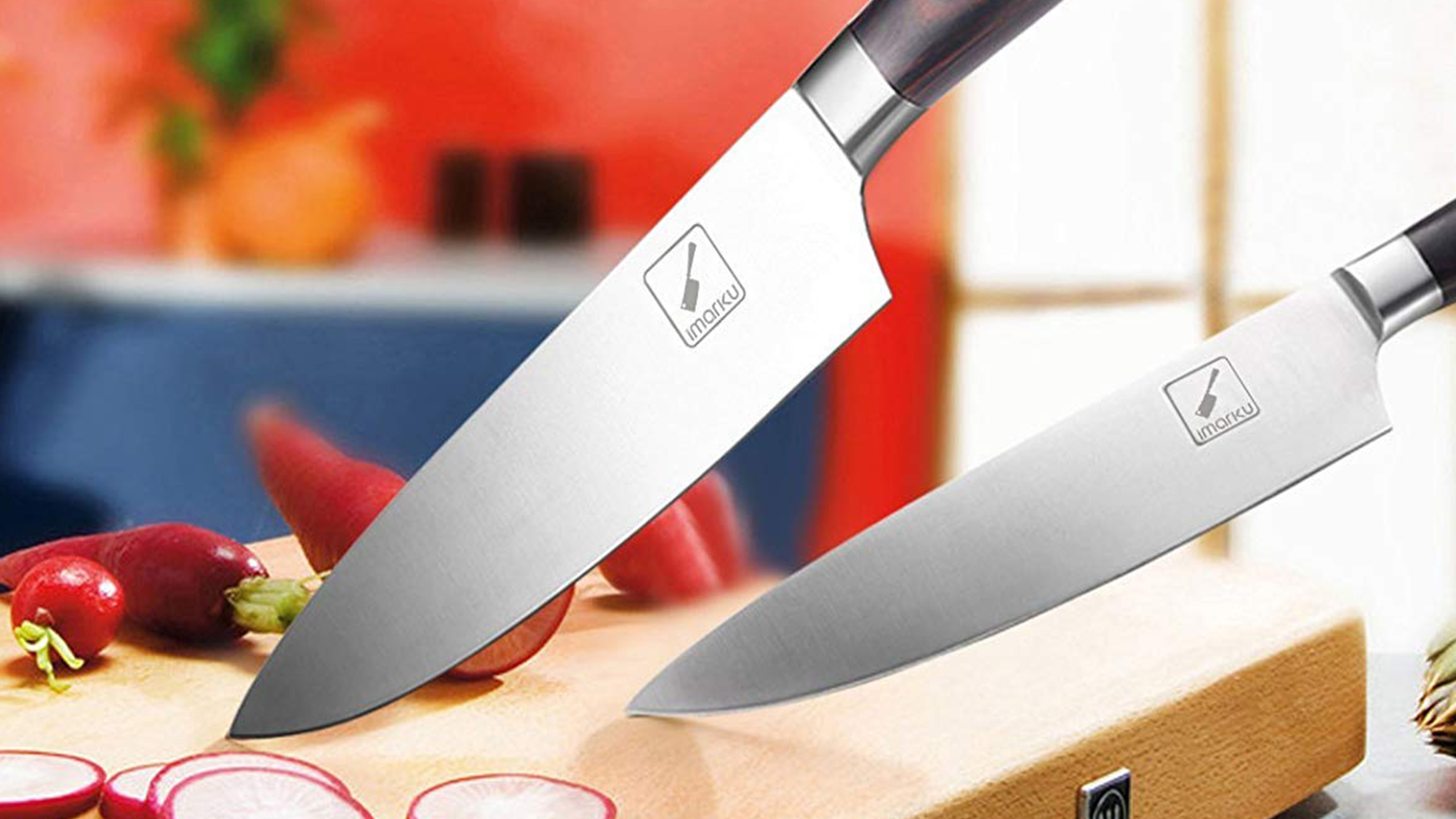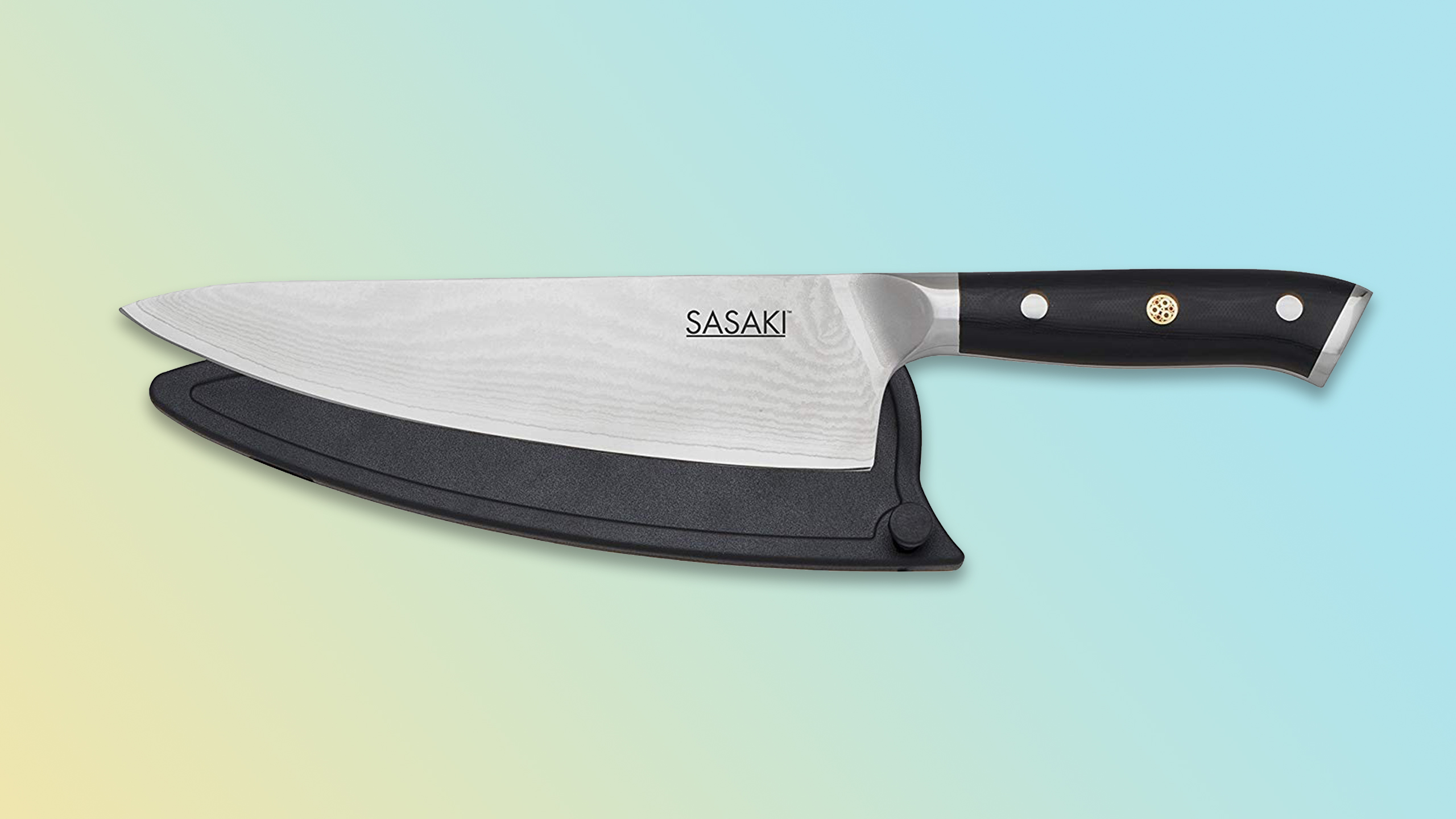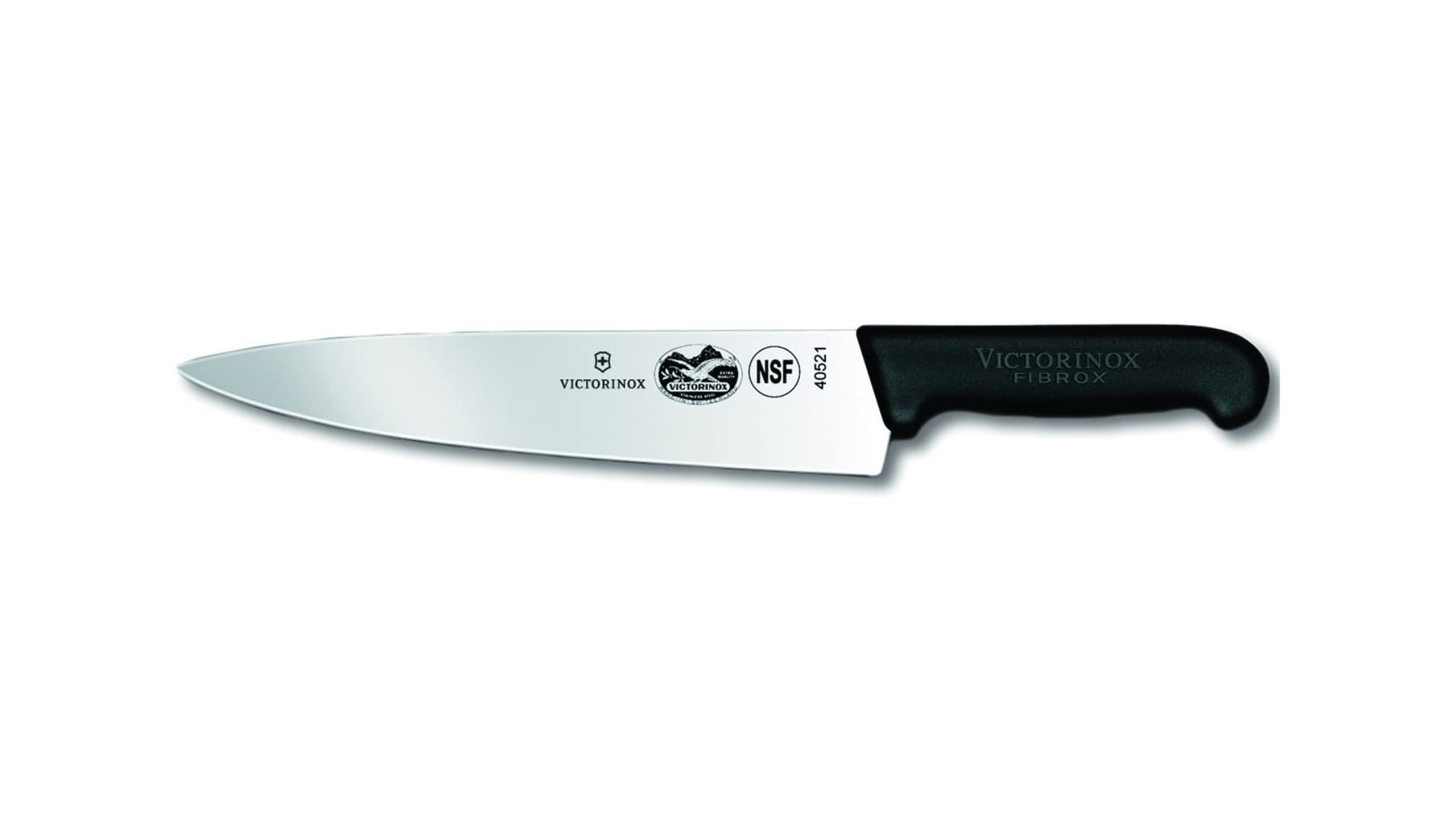About three years ago, I got serious about my kitchen tools. I’m not a professional chef, but I spend enough time in the kitchen cooking that I want to be intentional about what I’m using. My focus is on what matters to me: quality, efficiency, and ease-of-use.
The first step I took toward leveling up my kitchen tools was actually buying a highly rated chef’s knife, the 10-inch Classic model from J.A. Henckels. I got it in February 2016 for $58 (now it’s $60, which is notable since it hasn’t dropped in price in more than three years)—that and a 4.5-star average rating speaks volumes to the quality of this knife. Since then, I’ve learned a lot about chef’s knives—also known as multipurpose knives—and what my needs are, putting me yet again in a search for the perfect everyday knife. To begin my search, I consulted some knife experts from knifemaker Sasaki for tips on the basics of choosing my next multipurpose knife.
The Right Steel
You’ve got two basic types of steel to consider for your chef’s knife, the Sasaki knifemakers advised: carbon and stainless steel. Carbon will last longer and stay sharper but requires more maintenance. Stainless steel will dull faster but is easier to maintain and lighter. You’ll usually find language about high-carbon content in a stainless steel blade, which is a good place to start.

Imarku’s best selling chef’s knife has a high-carbon, stainless steel blade. It also has an average rating of 4.3 with more than 1,300 reviews — and it’s going for $20 right now.
Get the Full Tang
You know how some knives you hold show you the blade extending into the handle and sometimes all the way to its bottom edge, sandwiched by the handle itself on either side? That’s a full tang, or a way to denote how far the blade extends into the handle. The more tang, Sasaki’s experts explained, the more strength and balance your knife has (think of the basic concepts of leverage from your last physics class).

The full tang of this Amazon’s Choice chef’s knife means you’re getting the most long-lasting balance from its Japanese steel.
Remember This is YOUR Knife
You want to use the knife and test it for a few days to be sure it’s a good fit—your best bet to achieve that is to shop online for your exact needs (filtering by knife length, for example, or even color if style is important)—and find a blade you can return if it’s just not the right fit.

Lightweight and a crowd favorite, the handle of this Chef's knife is made of thermoplastic elastomer for a non-slip grip that'll never quit. More than 4,800 reviewers left it a 4.7-star average rating.

From chopping and slicing to mincing and dicing, this knife will do it all. The substantial and ergonomic design of the handle will make it a joy to use. More than 500 reviewers gave it a 4.6-star average rating.
Look for best selling chef’s knives—like the two above examples—to find what works for most people to get a sense of the style and features that many people find valuable. At the end of the day, the best decision-maker for your next chef’s knife is the chef: And that’s you.
Scouted is internet shopping with a pulse. Follow us on Twitter and sign up for our newsletter for even more recommendations and exclusive content. Don’t forget to check out our coupon site to find deals from Macy's, Walmart, Nordstrom Rack, and more. Please note that if you buy something featured in one of our posts, The Daily Beast may collect a share of sales.





